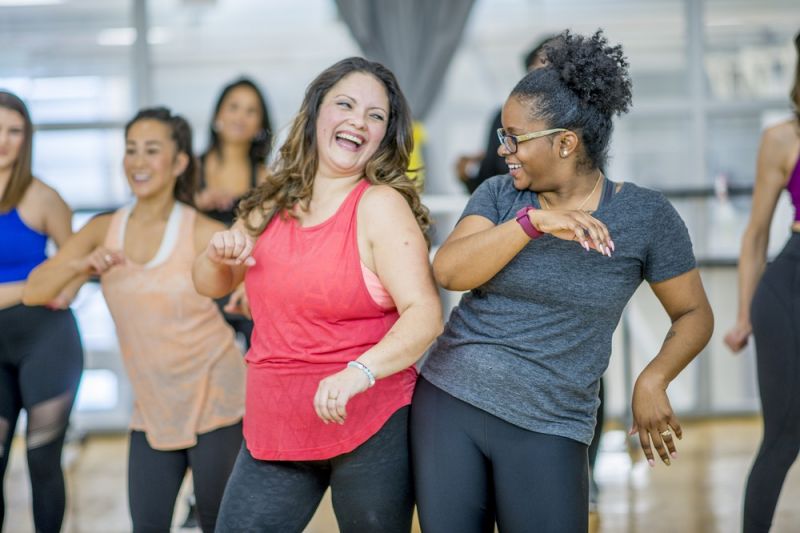
Imagine you're picking up a pea … now hold it for 3-8 seconds … hold it! … and let it drop completely.
You may have heard of this old-school method for doing pelvic floor exercises.
But pelvic floor exercises are not as easy to do correctly as picking up that imaginary pea sounds, because the pelvic floor muscles can be tricky to isolate.
Most women know it's important to do pelvic floor exercises daily, to protect against prolapse, or incontinence, and other possible issues after pregnancy, or as they age.
A survey showed that while most women knew what pelvic floor exercises were (96.4%), and could feel their pelvic floor muscles working when they tried to squeeze them (95.6%), less than two out of 10 women (17.6%) did their pelvic floor exercises daily.
Pelvic floor strength isn’t just an issue for woman - it's equally important for men to do these exercises, too.
Like any other muscles, the pelvic floor muscles need regular exercise to function optimally.
About the pelvic floor
The pelvic floor is a 'sling' of muscles, a bit like a small muscle hammock that runs between the pubic bone in the front, and the tailbone at the back.
A woman’s pelvic floor muscles support her womb (uterus), bladder, and bowel (colon). The urine tube (urethra), the vagina, and the anus all pass through the pelvic floor muscles.
A man’s pelvic floor muscles support his bladder and bowel. The urethra and the anus all pass through the pelvic floor muscles.
Your pelvic floor muscles help you to control your bladder and bowel, and are involved with sexual function.
Because of these very important functions, it's vital to keep your pelvic floor muscles strong.
What do pelvic floor exercises do for you?
Pelvic Floor First says pelvic floor muscle exercises can help:
- improve bladder and bowel control
- reduce the risk of prolapse
- improve recovery from childbirth and gynaecological surgery (in women)
- improve recovery after prostate surgery (in men)
- increase sexual sensation and orgasmic potential
- and increase social confidence and quality of life.
So, where are they?
A good starting point with the pelvic floor muscles is to lie down, resting comfortably, or to sit in a supported position. Now, imagine you are squeezing your muscles to stop the flow of urine and the passing of wind. Focus on drawing these muscles inwardly tightly. This gives you an idea of the location and function of the pelvic floor muscles.
You can also quickly identify the pelvic floor muscles by trying to stop the flow of urine while emptying your bladder. If you can do it for a second or two, you are using the correct muscles. (Do not do this repeatedly, or more than once a week. It can cause problems with emptying your bladder completely. It's purely for identifying the muscles you'll need to exercise.)
Focusing on the pelvic floor with more precision:
- Relax the muscles of your thighs, buttocks and stomach and keep them relaxed.
- Squeeze in the muscles around the urethra or front passage as if trying to stop the flow of urine.
- (For women, also squeeze in the muscles around the vagina and pull them upwards inside the pelvis.)
- Squeeze in the muscles around the anus as if trying to stop passing wind. Do not clench the buttocks, thighs or stomach.
- The muscles around the urethra and anus should squeeze up and inside the pelvis.
- Identify the muscles that contract when you do all these things together. Then relax and loosen them.
Now for the workout!
If you're sure you've identified the right muscles, you can start strengthening them right away:
Here are some targeted exercises for women and men from The Continence Foundation of Australia:
For women
- Squeeze and draw in the muscles around your anus and your vagina at the same time. Lift them UP inside. You should have a sense of “lift” each time you squeeze your pelvic floor muscles. Try to hold them strong and tight as you count to 8. Now, let them go and relax. You should have a distinct feeling of “letting go”.
For men
- Squeeze and draw in the muscles as though you are shortening your penis and lifting base of scrotum at the same time. Lift them UP inside. You should have a sense of “lift” each time you squeeze your pelvic floor muscles. Try to hold them strong and tight as you count to 3. Now, let them go and relax. You should have a distinct feeling of “letting go”.
For both
- Repeat squeeze and lift, and let go. It is best to rest for about 8 seconds in between each lift of the muscles. If you can’t hold for 3-8 seconds, just hold for as long as you can.
- Repeat this squeeze and lift as many times as you can, up to a limit of 8 to 12 squeezes.
- Try to do three sets of 8 to 12 squeezes each, with a rest in between.
- Do this whole training plan (three sets of 8 to 12 squeezes) each day while lying down, sitting or standing.
- While doing pelvic floor muscle training:
- keep breathing
- only squeeze and lift
- do NOT tighten your buttocks
- keep your thighs relaxed.

When to seek professional help
Sometimes a person’s pelvic floor muscles can be too tight. If you suspect this is the case for you, or you’re unable to find your pelvic floor muscles, or have problems making progress, you should see a pelvic floor physiotherapist, or health professional.
You should also seek professional help if you’re experiencing symptoms such as:
- needing to urgently or frequently go to the toilet to pass urine or bowel motions
- having accidental leakage of urine, bowel motions, or wind
- finding it difficult to empty your bladder or bowel
- having pain in the bladder, bowel or in your back near the pelvic floor area when exercising the pelvic floor, or during intercourse.
More information
- The Continence Foundation of Australia has a lot of good material on the pelvic floor as part of its focus on incontinence, for women, men, and teens. They also run the Pelvic Floor First website, dedicated to this topic which includes tips on what cardio, core, resistance and aqua exercises are good for people with, or at risk of, pelvic floor or continence issues, and importantly, what exercises to avoid. There is also a section specifically on exercising during pregnancy.
- The Jean Hailes Foundation for women’s health has a wide range of health information for women, including looking after the pelvic floor.
- If you are planning to become pregnant, you can read our article about maintaining pelvic floor health – What you should know about your pelvic floor: pre-pregnancy, during pregnancy and after giving birth.